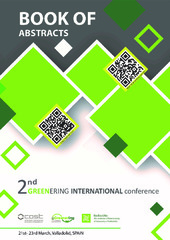Приказ основних података о документу
The separation of biologically active extracts from chamomile seeds
| dc.creator | Milovanović, Stoja | |
| dc.creator | Grzegorczyk, Agnieszka | |
| dc.creator | Świątek, Łukasz | |
| dc.creator | Tyśkiewicz, Katarzyna | |
| dc.creator | Konkol, Marcin | |
| dc.date.accessioned | 2023-11-23T10:43:58Z | |
| dc.date.available | 2023-11-23T10:43:58Z | |
| dc.date.issued | 2023 | |
| dc.identifier.uri | http://TechnoRep.tmf.bg.ac.rs/handle/123456789/6894 | |
| dc.description.abstract | The main aim of this study was to evaluate chamomile seeds as a new source of valuable bioactive compounds. For this purpose, a green extraction technique was employed with supercritical carbon dioxide (sc-CO2) as a solvent and ethanol as a co-solvent. The extracts from chamomile seeds with an average particle size of 0.20 mm were extracted at pressures of 30 and 45 MPa and temperatures of 40 and 60 °C. The composition of extracts was investigated by a gas chromatography-mass spectrometry analytical method as well as Folin−Ciocalteu assay (for total phenolic content) and total flavonoid content test. The antioxidant activity of obtained chamomile extracts was evaluated using DPPH radical. The antimicrobial effect of extracts was tested on yeasts, Gram-positive, and Gram-negative bacteria while the cytotoxic effect was evaluated on normal and cancer cells. The extraction process parameters were evaluated and results showed a significant effect of operating pressure, temperature, and the addition of co-solvent on the amount of separated chamomile extract and its composition. The extraction yield ranged from 2.1 to 5.4% and extracts contained high amounts of unsaturated fatty acids. The addition of ethanol as a co-solvent (40 w/w%) had a slight influence on total phenolic and flavonoid contents increasing their values from 29.1 to 31.5 mg GAE/g and from 2.1 to 4.2 mg QE/g, respectively. The obtained supercritical chamomile extracts showed antioxidant activity achieving values of IC50 around 10 mg/mL. The antimicrobial activity of extracts was most pronounced against Bacillus subtilis. Extracts did not show cytotoxic activity against normal cells. Overall, results indicated a significant potential of extracts from chamomile seeds, produced in an environmentally friendly manner, to be used as a functional food or phytopharmaceuticals. | sr |
| dc.language.iso | en | sr |
| dc.publisher | Valladolid : The lnstitute of Bioeconomy of University of Valladolid | |
| dc.relation | COST Action CA18224 "Green Chemical Engineering Network towards upscaling sustainable processes" (GREENERING) supported by COST (European Cooperation in Science and Technology) | sr |
| dc.relation | info:eu-repo/grantAgreement/MESTD/inst-2020/200135/RS// | sr |
| dc.rights | openAccess | sr |
| dc.rights.uri | https://creativecommons.org/licenses/by/4.0/ | |
| dc.source | Book of abstracts / 2nd Greenering International Conference, 21–23th March 2023, Valladolid, Spain | sr |
| dc.subject | antimicrobial activity | sr |
| dc.subject | antioxidant activity | sr |
| dc.subject | Chamaemelum nobile | sr |
| dc.subject | Supercritical carbon dioxide extraction | sr |
| dc.subject | Cytotoxic activity | sr |
| dc.title | The separation of biologically active extracts from chamomile seeds | sr |
| dc.type | conferenceObject | sr |
| dc.rights.license | BY | sr |
| dc.identifier.fulltext | http://TechnoRep.tmf.bg.ac.rs/bitstream/id/18796/The_separation_of_biologically_pub_2023.pdf | |
| dc.identifier.rcub | https://hdl.handle.net/21.15107/rcub_technorep_6894 | |
| dc.type.version | publishedVersion | sr |

